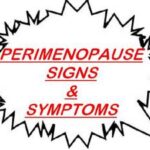In the 1970’s, Dr. John R. Lee, MD, had a thriving family medical practice in Northern California. Dr. Lee frequently had patients who came to him suffering with perimenopause symptoms, but for significant health reasons were unable to take the synthetic estrogens and progesterone that millions of women were taking at the time with hormone replacement therapy, also commonly known as HRT.
After hearing a lecture by Raymond Peat, PhD, who suggested that women in perimenopause should not be given estrogen for their symptoms, Dr. Lee launched an extensive quest to understand why.
It was in his research and study that Dr. Lee learned that what Raymond Peat was suggesting was correct. Many of the symptoms that women were suffering from in perimenopause were actually the result of too much estrogen in their bodies rather than too little as had been previously assumed. It was out of this research and studies that Dr. Lee first coined the term estrogen dominance.
What Causes Estrogen Dominance?
In a normal monthly menstrual cycle there are primarily two hormones at work in a woman’s body, estrogen and progesterone. At the beginning of a typical 28 day cycle, estrogen is the dominant hormone. By promoting the buildup of the endometrium, the inner lining of the womb, estrogen prepares the uterus for implantation of an embryo. [1]
At approximately mid-cycle, or around the 14th day, when ovulation occurs, the levels of progesterone begin to rise in preparation for fertilization. If fertilization does not occur, the progesterone level drops significantly and triggers menstruation. After approximately 7 days of menstruation, the cycle begins again.
When women enter perimenopause, however, the ovaries produce less and less progesterone until they eventually produce little to none. It is the drop in progesterone that creates an estrogen dominant environment in the body and causes the long list of difficult and commonly known symptoms of perimenopause that so many women suffer with.
What are the Symptoms of Estrogen Dominance?
As research and study of the effects of estrogen dominance continues, the list of symptoms that are believed to be caused by estrogen dominance continues to grow. However, some of the more commonly known and most troublesome symptoms are:
• Breast Tenderness
• Adrenal fatigue
• Loss of libido
• Vaginal dryness
• Fatigue
• Weight gain – particularly around the mid-section
• Heavy, cramping periods with blood clots
• Foggy thinking (short term memory loss)
• Infertility
• Depression
• Bloating
• Irritability and mood swings
• Excessive crying
• Insomnia
• Irregular menstrual cycles
• Hair loss
How Should We Treat Estrogen Dominance?
Since the primary cause of estrogen dominance is a lack of progesterone, the logical and most obvious treatment is to introduce progesterone back into the body. Preferably, also according to Dr. Lee, with progesterone that our bodies recognize as biologically identical to that which it naturally produces.
Unfortunately, the synthetic estrogens and progesterone that has been used to treat perimenopause symptoms for decades, are not only unnatural and biologically unrecognizable by our bodies, but the excess estrogen that is also introduced with the progesterone exacerbates the symptoms of estrogen dominance, and has also been proven to produce dangerous side effects such as an increased risk in breast cancer, heart problems, stroke and blood clots.
As is so often the case in the medical community, change is slow and usually met with much resistance. Particularly, when the new ideas and research are so radically opposed to what has been considered commonly accepted medical practice.
But, the good news is, that as Dr. Lee’s work on estrogen dominance and natural versus synthetic progesterone is studied further by the medical community, more physicians are recognizing the value and accuracy of his research and are turning away from HRT and prescribing bio-identical hormones instead.
Sources:
[1] Hotze, Dr. Steven F. (2005). Hormones, Health & Happiness: A Natural Medical Formula for Rediscovering Youth with Bioidentical Hormones. Houston, Texas: Forrest Publishing
Virginia Hopkins Health Watch
The Perimenopause Blog






